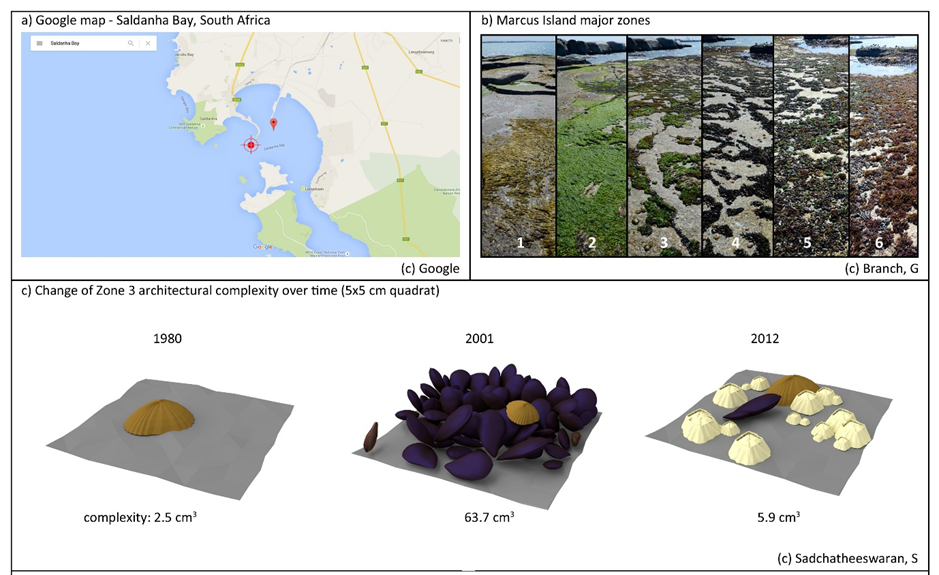2 February 2016 | By Saachi Sadchatheeswaran
An interesting study by C∙I∙B PhD student, Saachi Sadchatheeswaran, examined the different number of species (species richness) and invertebrates on the rocky shores of Marcus Island after the arrival of alien species that were also ecosystem engineers. Saachi and colleagues surveyed the rocky shores in 1980, 2001 and 2012, and recorded over that period invasion by three alien species – the Mediterranean mussel (Mytilus galloprovincialis), the North American Pacific barnacle (Balanus glandula) and a tiny mussel from South America, the Bisexual mussel (Semimytilus algosus).
To examine the alien species’ influence on the habitable volume (complexity), Saachi used a 3D graphics programme to recreate the samples collected in 1980, 2001 and 2012. She found that in 1980, the habitat complexity increased with increasing proximity to the water. In 2001, the Mediterranean mussel dominated five of the six visible intertidal zones and complexity equalised across the invaded area. Then in 2012, when the Pacific barnacle and Bisexual mussel were first recorded on Marcus Island, complexity returned to 1980 levels.
“The samples covered with the Mediterranean mussel bore a striking resemblance to skyscrapers, while the samples covered with the acorn barnacle looked like a neighbourhood of bungalows,” says Saachi. She explains further “Skyscrapers provide lots of living space in a small area because of vertical living; therefore more species and individuals can be accommodated. In comparison, a spread of bungalows in the same size area provides very little living space.”
Using the skyscraper-bungalow analogy, Saachi made predictions on the changes to species richness and abundance of invertebrates, and found that 18 of 20 predictions were correct. Wherever the habitable volume (complexity) increased, decreased or stayed the same, so too did the number of species and individuals. While habitat complexity was able to predict changes to the species richness and individuals in each zone, the community structure (the actual species that make up each zone) was probably affected by a combination of habitat complexity and tidal height.
Read the paper
For more information, contact Saachi Sadchatheeswaran at saachitini@gmail.com




